The 16 Types of Camera Shots & Angles
Do you sometimes feel like your vision for a film is lost in translation? It can be a frustrating experience, but one that can be avoided (or at least minimised). Before delving into the intricate world of advanced video transitions or the finesse of animatics, it's essential to establish a strong foundation in the fundamentals of storyboarding. This solid groundwork serves as the bedrock upon which your cinematic aspirations can flourish.
Armed with a working knowledge of camera shots, angles, and perspective techniques, you’ll be well on your way to creating easy-to-read storyboards. It's the key to unlocking your ability to draft storyboards that not only capture your original vision but also convey it to others with precision and impact.
To that end, we've pulled together 16 camera moves and camera shot types to give your storyboarding vocabulary a boost.
Get this guide as a poster
Basic Camera Moves
By incorporating a variety of different camera moves into your shots, you can add a deeper sense of visual interest. Combine this with a strategic approach to messaging and you'll be off to the races.
In the realm of camera movements, take particular care when selecting the most appropriate camera move. Remember that your choices here are integral to creating an experience that resonates deeply with your audience as each camera move has a distinct impact, influencing the viewer's emotional response and immersion into the scene.
Here are some well-loved camera moves to consider:
Zoom

Probably the most well-known camera move, zooming gives the impression of moving closer or further away from the subject. It can be used effectively to magnify a certain focus point in the camera frame, but other moves such as a dolly, are a more natural way to show movement. While a quick zoom can help add a sense of drama and energy when used correctly, avoid over-using a zoom shot as your default move.
Also if you're making a storyboard, Boords has pre-built indicators for Zooming (as well as a bunch of other common camera moves). Just click Insert Camera Movement in the Image Editor:
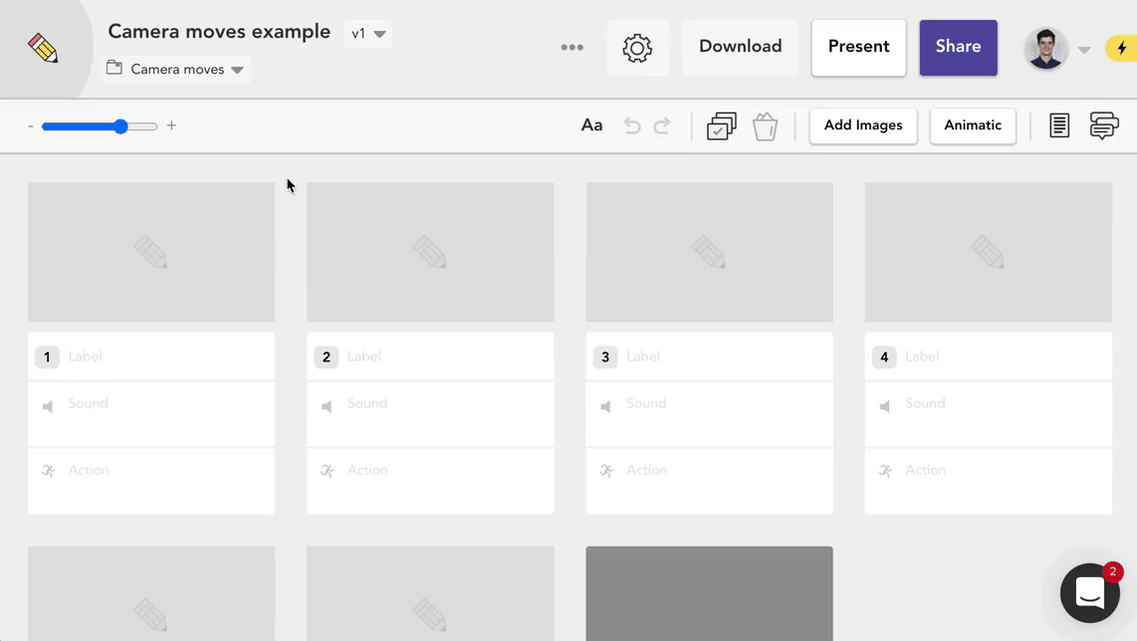
Pan

Panning is when the camera is moved horizontally from one side to another on a central axis. This is a rotating movement in which the camera's position remains in place, but the direction that it faces changes. It can be used to follow a moving character or to fit more into a frame, for example, panning across a landscape to create a sense of place.
Panning offers a practical way to guide the viewer's attention within a scene and can be particularly useful in action sequences, where maintaining focus on a rapidly moving subject might otherwise prove challenging.
The Shortcut to Effective Storyboards.
Boords is an easy-to-use storyboarding tool to plan creative projects.
Get Started for FreeTilt

Tilting is similar to panning in that the camera is kept in a stationary position, but unlike panning (which looks from side to side) tilting focuses on upwards & downwards movements. Using a tilting motion helps to fit more into a single frame. A slow upwards tilt can be very effective in making a subject appear bigger or more significant while a downwards tilt has the opposite effect.
When the camera tilts upwards, it can convey a sense of aspiration or grandeur. For example, capturing a towering skyscraper from a low angle through an upward tilt emphasizes its height and dominance in an urban landscape. This technique is often used to emphasize power, authority, or the awe-inspiring nature of a subject.
On the other hand, a downward tilt can evoke vulnerability, oppression, or a shift in power dynamics. It’s used frequently to create a feeling of unease or to place the viewer in a position of overlooking a subject. For example, tilting the camera downward to reveal a character lying injured on the ground can intensify the emotional impact of the scene and encourage empathy from the audience.
Dolly

A dolly shot is when the entire camera is mounted on a track and is moved towards or away from a subject. Unlike a zoom shot, the world around the subject moves with the camera. A dolly zoom gives the illusion that the viewer is walking towards the subject. By bringing the subject into sharp focus, it can be a great way of creating a sense of intimacy between them.
The controlled movement of the camera on a track allows for smooth and dynamic transitions, allowing the audience to feel like they are truly part of the scene. This technique is often employed to establish a connection between characters and their surroundings, as it can simulate the experience of physically moving through the environment.
Truck

Similar to dollying, trucking involves moving the entire camera along a fixed point, but the motion goes from side to side, rather than in and out. It's often used to follow characters in action. Mounting the camera on a fluid motion track will help to stamp out any jerking camera movements.
Trucking shots are especially powerful in conveying the dynamics of a scene, immersing viewers into the environment or revealing important elements piece by piece. For instance, in a suspenseful thriller, trucking can subtly shift the audience's attention from a character to a looming threat in the periphery. This side-to-side movement can also simulate a character’s perspective, allowing the viewer to 'walk' beside them, thereby building a deeper connection or empathy.
To add a truck indicator in Boords, just select Pan right from the Camera Movements menu in the Image Editor:
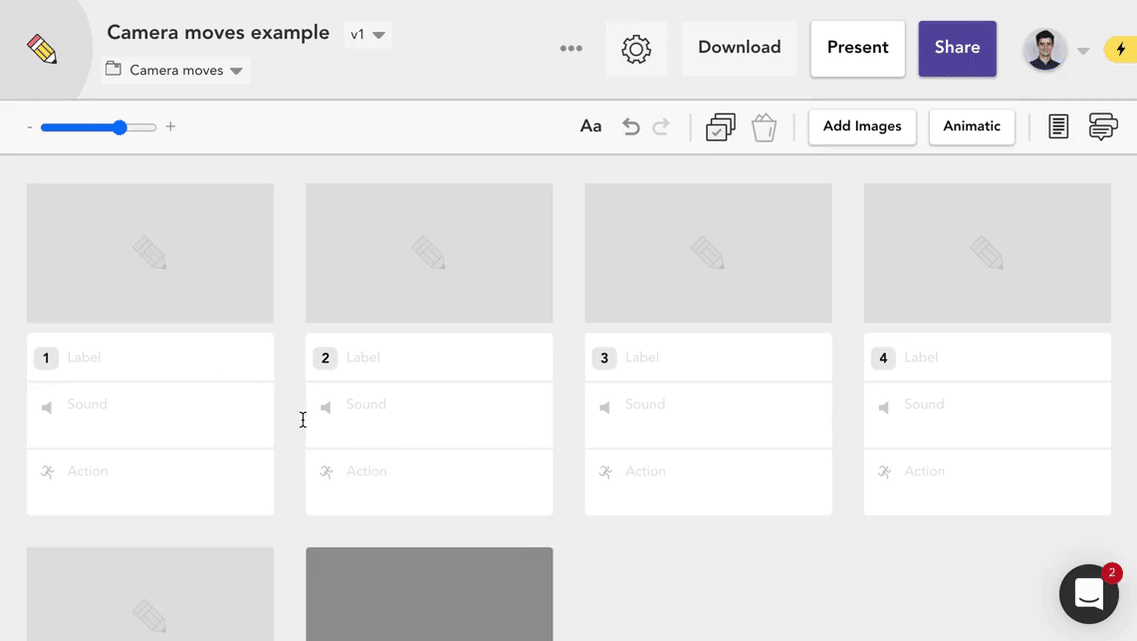
Pedestal

A pedestal (AKA Boom up/down or Jib up/down) requires the camera operator to move the camera upwards or downwards in relation to a subject. It's different from tilting in that the entire camera ascends or descends, rather than just the camera angle.
It's a distinctive way to control the viewer's perspective and engagement within a scene. By vertically adjusting the camera's position while maintaining its angle, filmmakers can draw attention to specific elements within a composition. A pedestal shot can be used to frame a tall or high subject (such as a building) while keeping the framing at eye level view for the viewer.
Pedestal shots can add a sense of dynamism to a scene by altering the spatial relationship between subjects and their surroundings. By gradually moving the camera upwards or downwards, filmmakers can emphasize changes in perspective and revealing new details. This can be especially effective in environments with significant vertical elements, such as cityscapes, forests, or architectural marvels.
Get your FREE Filmmaking Storyboard Template Bundle
Plan your film with 10 professionally designed storyboard templates as ready-to-use PDFs.
Storyboarding Shot Types
There are many different camera shot angles that can be used to frame a subject within a shot, ranging from showing their entire body to fixating on a finer detail, such as their eyes.
In choosing the most fitting camera shot angle, you'll need to bear in mind the message that you're trying to communicate to your audience as different angle shots can elicit different reactions from the viewer. Each shot has its own distinct impact, allowing you to craft a narrative that engages, informs, and resonates with your audience on multiple levels.
Here are some of the most common types of shots and how you can go about using them:
Establishing shot
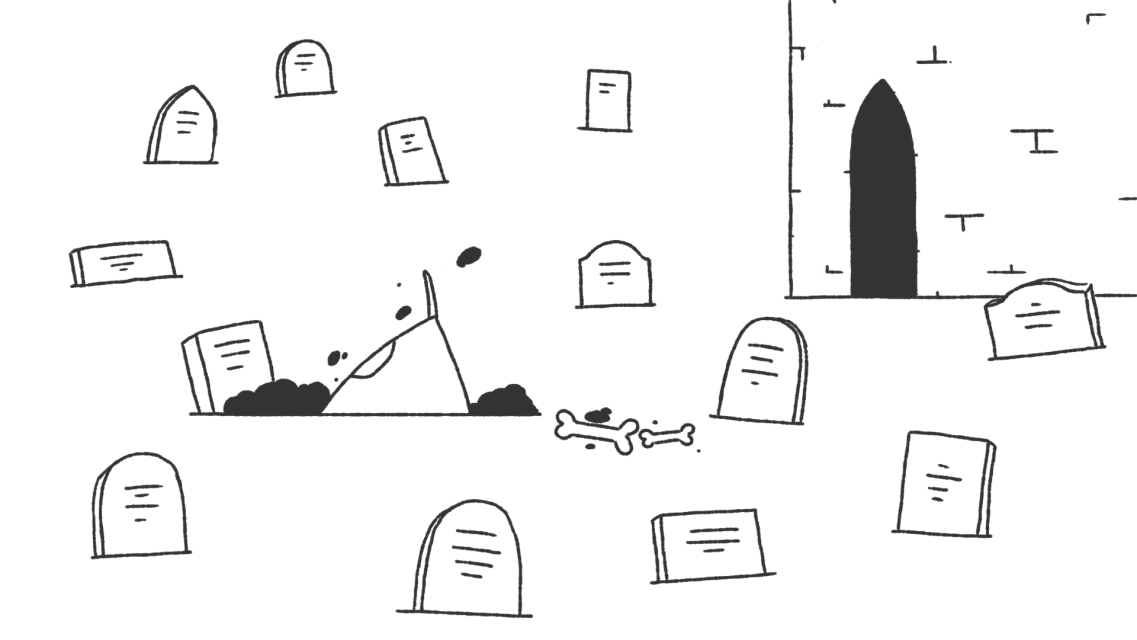
Often included at the beginning of a scene, establishing shots help to build ambiance and may give a nod towards the context of what's to come. It generally comes in the form of a long and wide shot and indicates where (and sometimes when) the scene is taking place. As a long shot, it can frame the subject, while also building an understanding of the effect that their environment is having on the character's current situation.
As an essential tool in a filmmaker's arsenal, the establishing shot sets the tone for the unfolding narrative, enhancing the audience's engagement and understanding.
Full shot
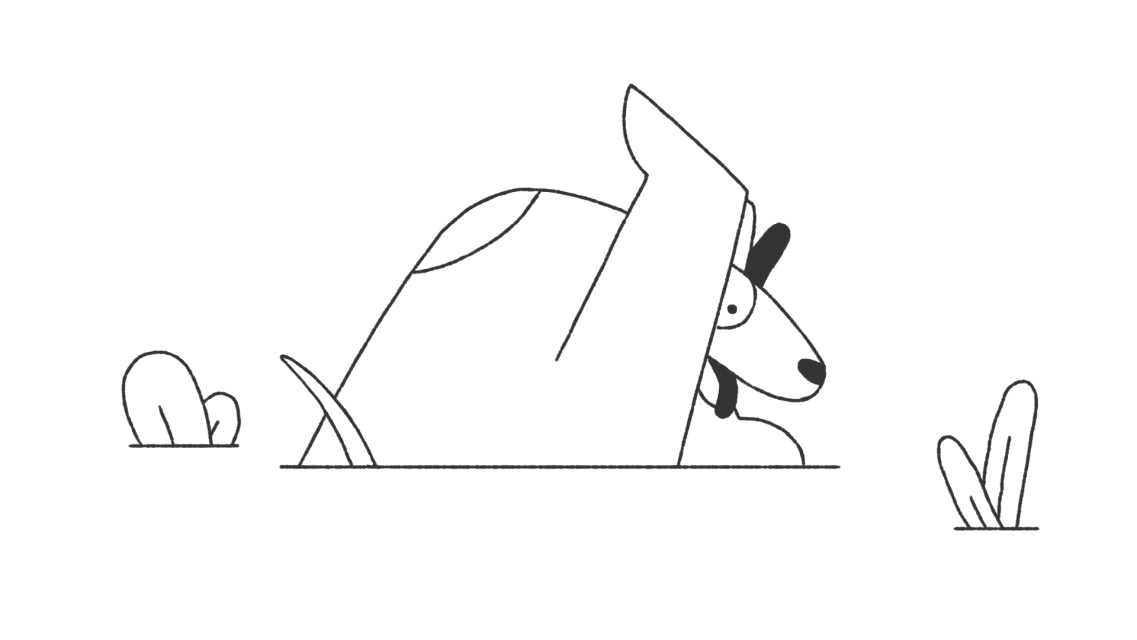
The full shot is just as the name implies and shows the entire body of the subject from head to toe. This camera shot tends to emphasize the character's physical presence, showcasing their movements, body language, and gestures as the focal points. By providing a comprehensive view of the character within their surroundings, the full shot offers a contextual understanding of their actions and interactions.
This camera shot helps to establish the spatial relationship between characters and their environment, allowing the audience to grasp the character's physical actions and interactions while placing less emphasis on their inner emotions or mental state.
The full shot can be particularly effective in scenes that require the viewer to observe a character's demeanor, physical reactions, or interactions with other elements in the scene. Whether capturing a character's confident stride down a bustling city street or their hesitant movements in a tense confrontation, the full shot plays a key role in presenting a holistic visual narrative.
Medium shot
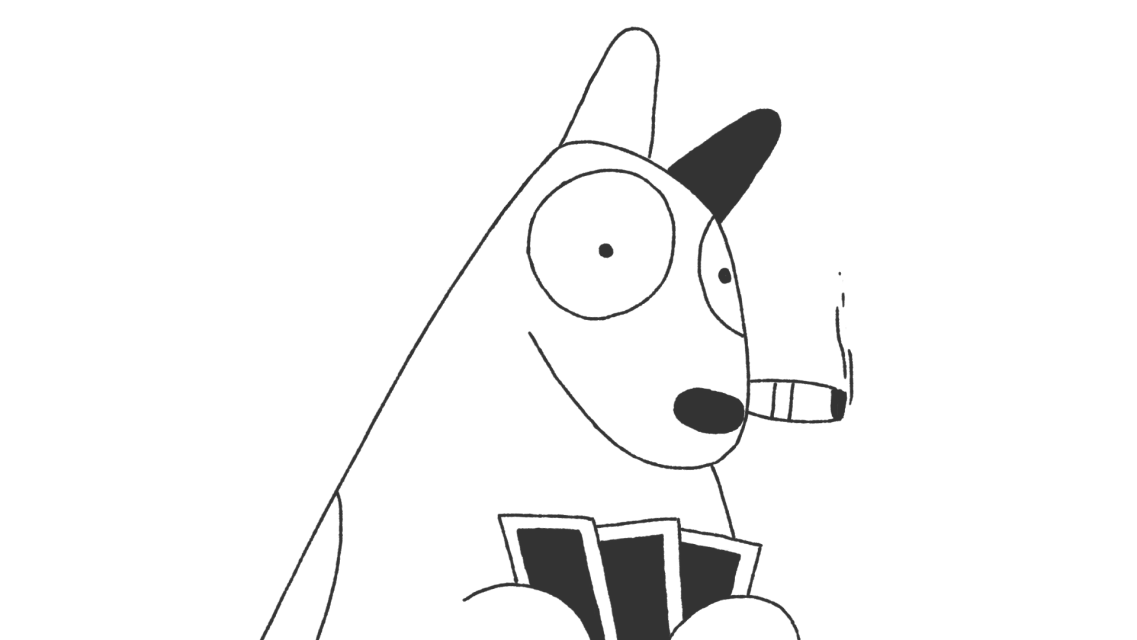
Also known as the ¾ shot, the medium shot typically shows the subject from the knees up. This camera angle allows the viewer to see the background environment and the character's gestures, while still being close enough to capture their emotions.
It strikes a balance between intimacy and context, providing the viewer with a clear view of the character's upper body and facial expressions while also encompassing elements of the background environment. By maintaining a proximity that captures both the character's physical actions and their emotional nuances, the medium shot effectively bridges the gap between the purely physical and the internal realms of the character.
Get this guide as a poster
Close shot
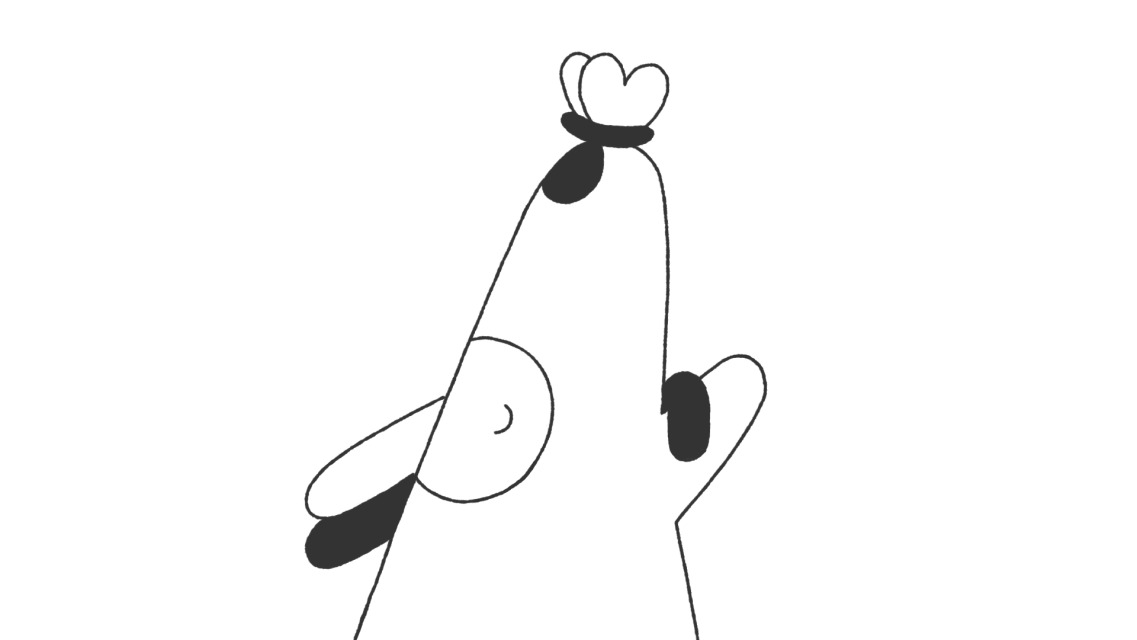
With a close up shot, the subject's head/face takes up the majority of the frame and therefore, allows their reactions and emotions to dictate the scene. As an eye level shot, it thrusts the subject into the forefront, making them the focal point and unequivocal center of attention. This emphasis creates a sense of connection between the viewer and the subject, with minimal distractions from background elements that might otherwise dilute the emotional impact.
A furrowed brow, a subtle smile, or a tear-filled gaze - these are intimate details that allow the audience to resonate deeply with the character's emotional journey. Directors and cinematographers use the close-up shot to intensify climaxes of scenes, heightening the viewer's emotional engagement and empathy.
The close up shot becomes a window into the soul of the character, allowing viewers to partake in their joys, struggles, and transformations with a level of intimacy that goes beyond the visual medium.
Extreme close shot
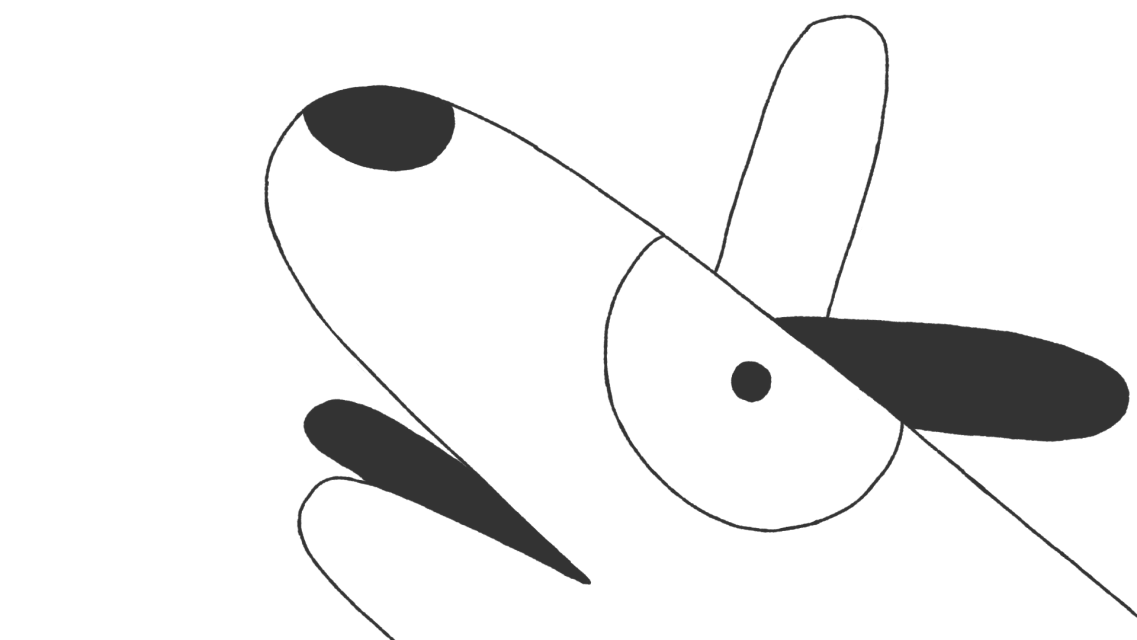
With an extreme close shot, the camera position is so close that only one specific detail, such as a person's eyes or mouth, can be seen. Because of the unnaturally close nature of the shot, it should be used sparingly, but when used appropriately, an extreme close up can have a remarkable effect, infusing scenes with heightened tension, emotion, and significance.
This unconventional shot acts as a magnifying glass for the narrative, drawing attention to the smallest aspects that might have otherwise slipped past the viewer's notice.
Up shot
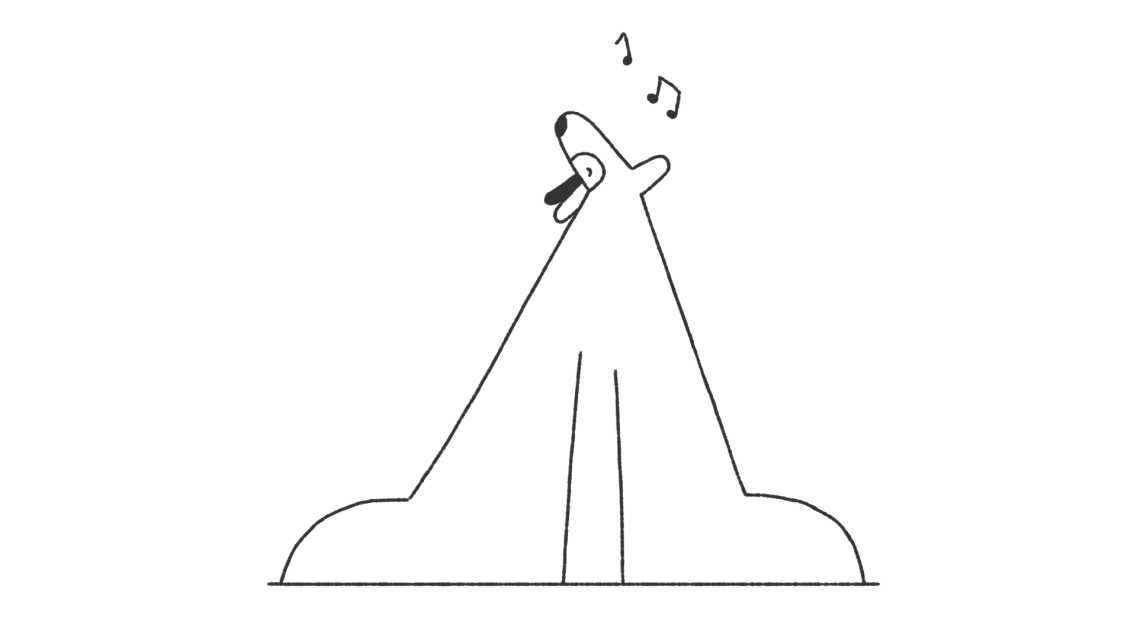
An up shot (also known as a low angle shot) is taken from a low angle, below the eye-level of the subject. As the camera points upwards, it creates the perception that the viewer is looking at them from a lower perspective. The low angle shot can alter the power dynamics within the scene, giving the impression that the subject is in some way powerful, heroic or even dangerous
The upward perspective can elevate characters to iconic status, emphasizing their purpose or the magnitude of their actions. This low angle shot has been employed in scenes where protagonists face insurmountable odds, stand tall in the face of adversity, or when antagonists rise to positions of power, projecting an aura of authority.
Down shot
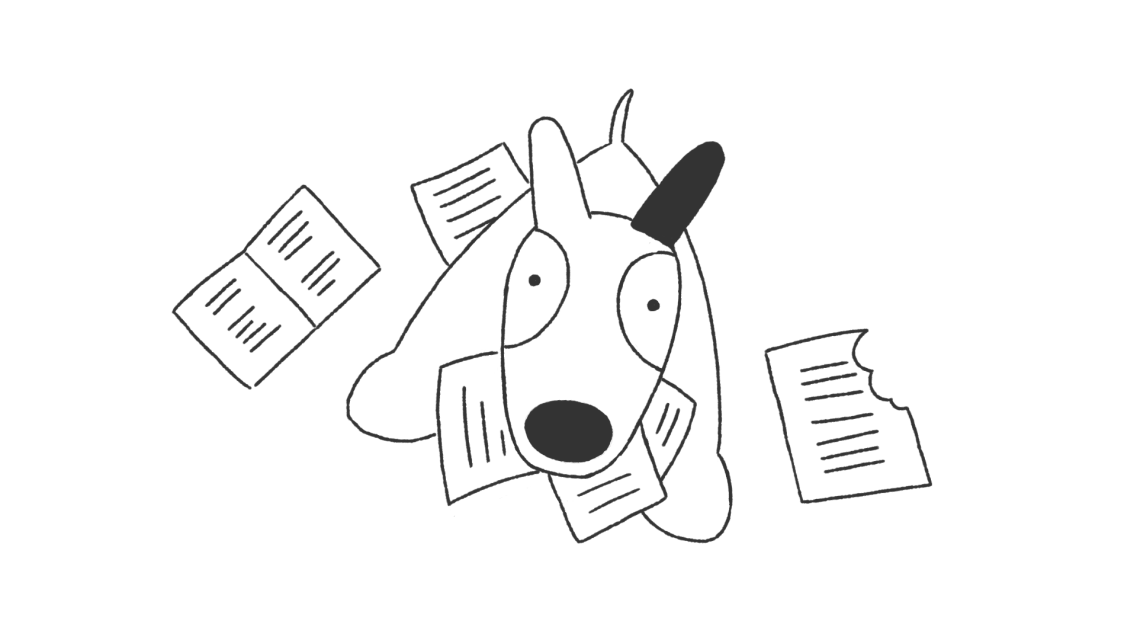
A down shot (also known as a high angle shot), in contrast to an up shot, is taken from a high angle, above the eye-level of the subject.
Camera shots like this impart a sense of dominance over the subject, while also rendering them smaller and less imposing within the frame. The down shot can be used to evoke emotions of vulnerability, powerlessness, or insignificance. This camera angle can cast characters as pawns in a larger scheme, overshadowed by external forces or trapped in situations beyond their control. It's a tool that can be harnessed to create empathy, sympathy, or even pity for the character's predicament.
The down shot is particularly effective when crafting moments of tension, illustrating characters caught in compromising situations, or highlighting the consequences of their actions.
Over the shoulder shot
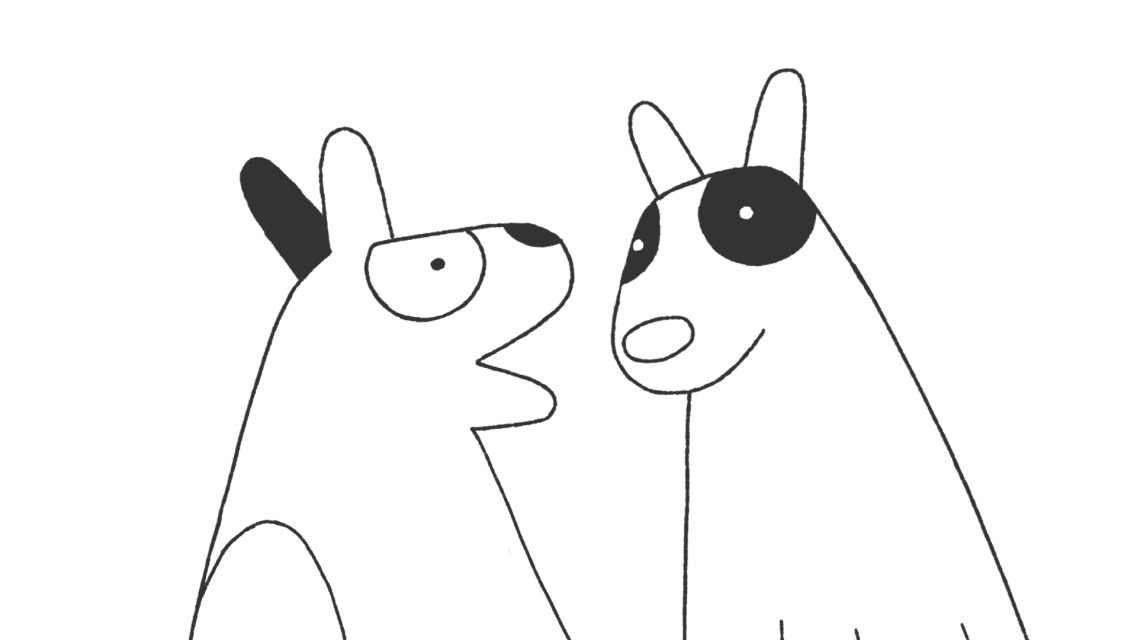
An over the shoulder shot, a common technique in filmmaking and photography, involves positioning the camera behind the shoulder of one character while framing the subject in a close or medium shot. A shoulder level shot typically takes the form of an over the shoulder shot as it can effortlessly capture the interactions between two characters within the same frame.
These types of camera shots are particularly effective in group conversation scenes and help to establish which characters are speaking to each other. By revealing both the speaker's expressions and reactions from the listener's perspective, the over the shoulder shot provides a complete view of the interaction. It helps viewers connect the verbal communication with the non-verbal cues and emotional responses of both characters, enriching the audience's understanding of the scene's dynamics.
The Shortcut to Effective Storyboards.
Boords is an easy-to-use storyboarding tool to plan creative projects.
Get Started for FreeTwo shot
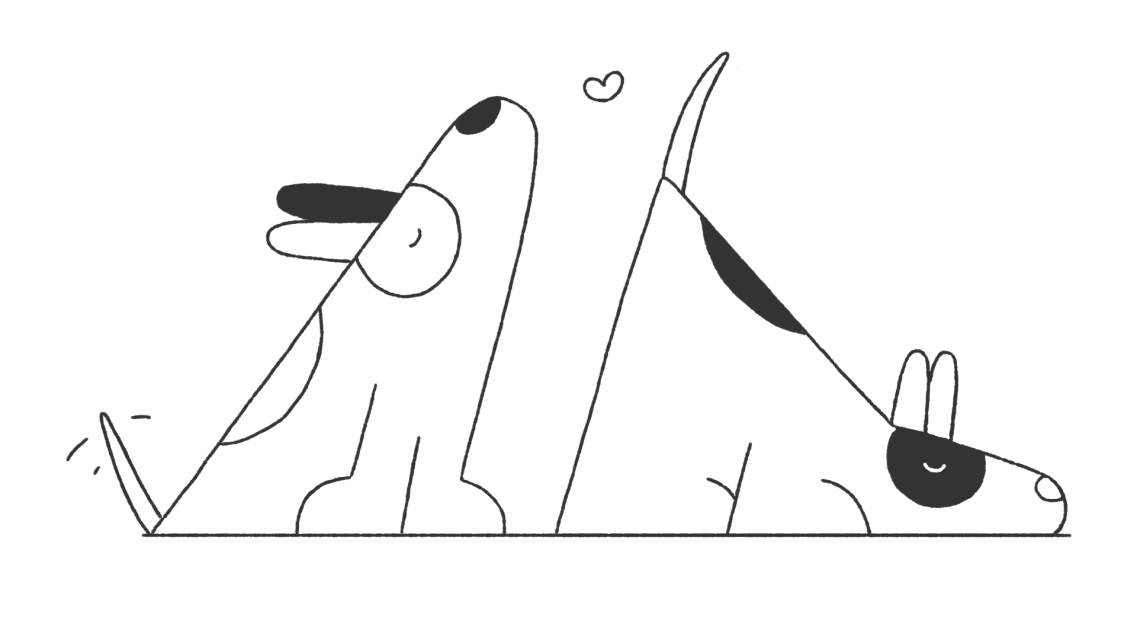
A two shot presents two characters sharing the frame, often side by side or in close proximity. This simple arrangement is a natural means of introducing both characters, providing an immediate visual context for their connection. By positioning characters in a two shot, filmmakers can convey a wealth of information about their relationship and interactions without relying solely on dialogue.
Different variations of this shot can be applied to communicate different messages about the characters and their dynamic. When characters are placed side by side within the frame, it can suggest a sense of equality and mutual significance within the scene. This positioning implies that both characters have equal prominence and roles to play in the narrative's unfolding.
Alternatively, when characters are framed with one slightly in front of the other, the composition can imply a power imbalance or hierarchical relationship between them. This technique can visually highlight dominance, submission, or even a mentor-protégé dynamic, where one character takes the lead while the other follows. Such nuanced placement within the camera frame contributes to the visual storytelling, enhancing the audience's perception of the characters' roles and the underlying tensions or connections between them.
Point of view shot
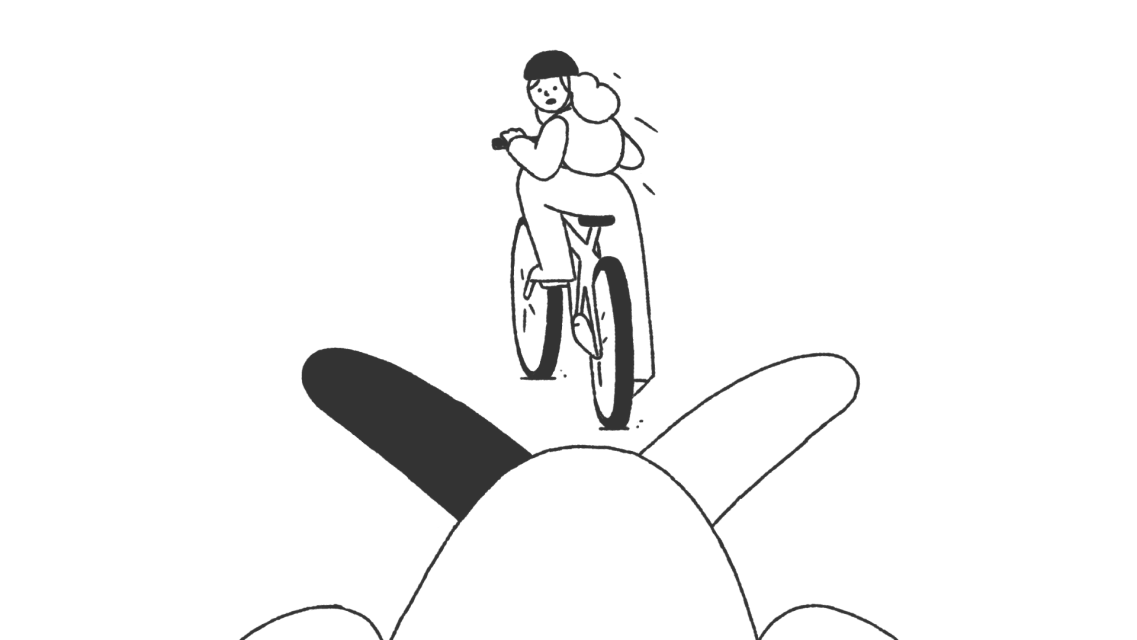
The point of view shot, also known as the POV shot, depicts an angle that shows what a character is looking at. This unique cinematic technique places the audience directly within the character's visual perspective, allowing them to witness the world through the character's eyes. By immersing viewers in the character's viewpoint, the POV shot provides a window into their thoughts, emotions, and reactions, forging a deeply personal connection between the audience and the narrative.
This shot is particularly effective at conveying a character's state of mind and their subjective experience of the environment. It enables the audience to share in their excitement, fear, wonder, or any other emotion relevant to the scene.
Applying this to your storyboards
While a picture often speaks a thousand words, being precise with your language relating to camera shots, angles and perspectives can really make the world of difference when it comes to storyboarding.
These elements possess the power to convey emotions, relationships, and narratives in ways that words alone cannot capture. Mastering the art of communicating through visuals requires a delicate balance of simplicity and precision. Every shot is a brushstroke on the canvas of your story, and with mindful attention to detail, you're primed to craft a masterpiece that captivates and resonates with viewers.
Keep it simple yet specific, and you'll be on track to a brilliant animatic.